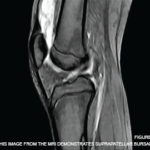A workgroup of clinical experts developed an Appropriate Use Criteria (AUC) for IAHA treatment of knee OA, published in Cartilage in 2016, that outlined appropriate, uncertain or inappropriate patient scenarios for use of IAHA. Six were scored as appropriate, 10 as uncertain, and one as inappropriate.7 The six clinical scenario for appropriate use include symptomatic adults with mild or moderate OA of the knee who have clinically and radiologically confirmed disease who have not received other therapies for the knee, have failed other nonpharmacologic or pharmacologic therapies for the knee or have had an incomplete response to other therapies for the knee.
The task force contends that IAHA “is not a panacea for treating a heterogeneous disease such as knee OA.” However, because knee OA mostly affects the elderly and patients with significant comorbidities and with conditions that can restrain the use of several conventional therapeutics, IAHA can be a “key weapon in the therapeutic armamentarium for managing knee OA in patients with contraindications to conventional interventions.”
Kathy Holliman, MEd, has been a medical writer and editor since 1997.
References
- Cooper C, Rannou F, Richette P, et al. Use of intra-articular hyaluronic acid in the management of knee osteoarthritis in clinical practice. Arthritis Care Res (Hoboken). 2017 Jan 24.
- National Institute for Health and Care Excellence (UK). Osteoarthritis: Care and management in adults. NICE Clinical Guidelines, No. 177. 2014 Feb.
- Hochberg MC, Altman RD, April KT, et al. American College of Rheumatology 2012 recommendations for the use of nonpharmacologic and pharmacologic therapies in osteoarthritis of the hand, hip, and knee. Arthritis Care Res (Hoboken). 2012 Apr;64(4):465–474.
- Jordan KM, Arden NK, Doherty M, et al. EULAR Recommendations 2003: An evidence based approach to the management of knee osteoarthritis: Report of a Task Force of the Standing Committee for International Clinical Studies Including Therapeutic Trials (ESCISIT). Ann Rheum Dis. 2003 Dec;62(12):1145–1155.
- McAlindon TE, Bannuru RR, Sullivan MC, et al. OARSI guidelines for the nonsurgical management of knee osteoarthritis. Osteoarthritis Cartilage. 2014 Mar;22(3):363–388.
- Brown GA. AAOS clinical practice guideline. Treatment of osteoarthritis of the knee: Evidence-based guide. 2nd edition. J Am Acad Orthop Surg. 2013 Sep;21(9):577–579.
- Bhadra AK, Altman R, Dasa V, et al. Appropriate use criteria for hyaluronic acid in the treatment of knee osteoarthritis in the United States. Cartilage. 2016 Aug 10.


